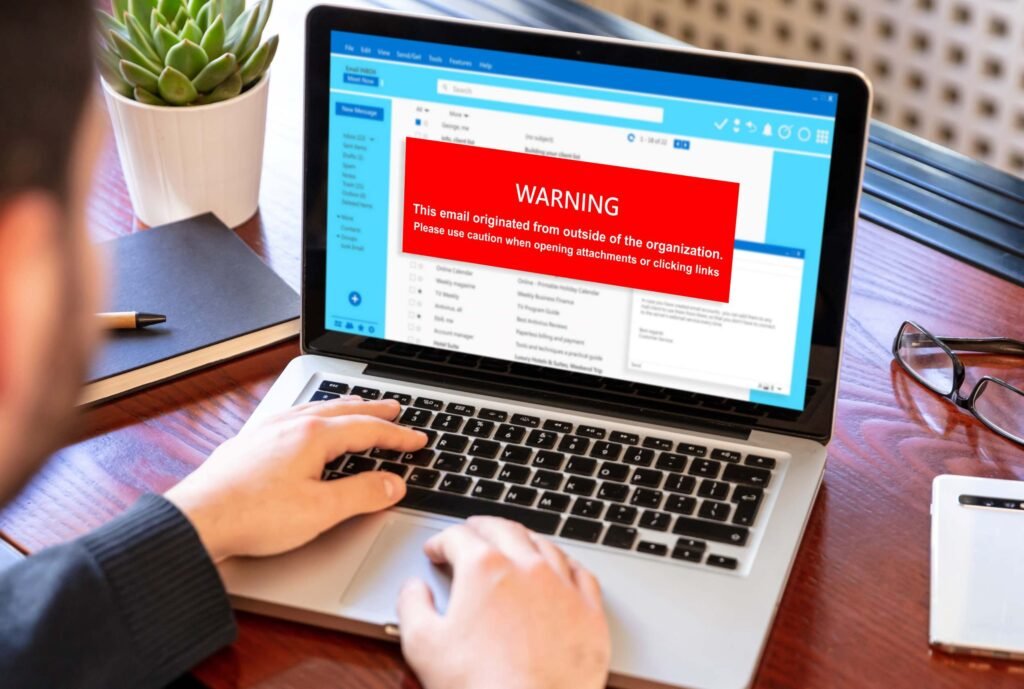As an NDIS provider, you deliver life-changing care to participants. But protecting their personal and health data is equally vital. Vivek Mahajan, founder of Careable and Cyber.Guide, has seen firsthand how Common Cyber Risks jeopardize NDIS providers. With digital tools now central to participant records, billing, and NDIS portal access, cyberattacks are a daily risk. A single breach can expose sensitive data, disrupt care, and violate NDIS Practice Standards.
Drawing on his experience with Careable, a registered NDIS provider, and his cybersecurity work with Cisco, NTT, and Fujitsu, Vivek shares the five most common cyber risks NDIS providers face and practical steps to mitigate them, aligned with Australian Cyber Security Centre (ACSC) guidelines.
1. Phishing Emails and Social Engineering
Phishing involves fraudulent emails, texts, or calls that trick staff into sharing credentials or clicking malicious links. In 2024, phishing caused 36% of Australian data breaches, per the ACSC Annual Cyber Threat Report.
Real Example: In 2023, a Victorian NDIS provider received a phishing email posing as an NDIS Commission update. Clicking a malicious link locked their records system for 48 hours, delaying care plans and costing $15,000 in recovery. Vivek’s team at Cyber.Guide helped them implement training to prevent future incidents.
What to Do:
- Train staff to spot red flags like urgent language or fake domains (e.g., “ndis-gov.au” vs. “ndis.gov.au”).
- Deploy email security tools like Microsoft 365’s spam filters to block threats.
- Verify suspicious requests via phone, never email.

Learn more in our guide on Phishing Scams: How to Spot and Stop Them.
2. Weak Passwords and Lack of 2FA
Simple or reused passwords are easy targets for hackers. Without Two-Factor Authentication (2FA), a compromised password can expose participant data or NDIS portal access.
Why It Matters: The 2024 Verizon Data Breach Report found 80% of breaches involve stolen credentials.
What to Do:
- Enforce passwords with 12+ characters, mixing letters, numbers, and symbols (e.g., G7m$kL9p#vT2).
- Use a password manager like Bitwarden to generate and store secure passwords.
- Enable 2FA on all systems, especially the NDIS portal, using apps like Google Authenticator.
See our post on Strong Passwords: Your First Line of Defense.
3. Unsecured Wi-Fi Networks
Open or outdated Wi-Fi networks are vulnerable, especially for staff accessing records remotely. Default router passwords or old firmware invite attacks.
Real Risk: A 2024 study found 25% of cyberattacks exploit weak Wi-Fi, per Cybersecurity Insiders.
What to Do:
- Set a unique, 12+ character Wi-Fi password and use WPA3 encryption.
- Update router firmware quarterly via the admin panel (e.g., 192.168.1.1).
- Create a separate guest network to isolate visitor devices from business systems.
Read Is Your Wi-Fi Putting Your NDIS Business at Risk?.
4. Lack of Staff Cyber Training
Human error is the leading cause of breaches. Support staff, focused on care, often lack cybersecurity awareness, making them targets for scams.
Case Study: A Queensland NDIS provider, advised by Vivek, avoided a 2024 phishing attack after monthly training helped staff spot a fake invoice email.
What to Do:
- Run 15-minute monthly refreshers using free ACSC training resources.
- Provide cheat sheets for safe device use (e.g., “Don’t open unknown attachments”).
- Reward staff for reporting suspicious emails to build a security culture.
5. No Data Backup Plan
Ransomware or system failures can erase participant records, halting care. The ACSC’s Essential Eight emphasizes backups to mitigate such risks.
What to Do:
- Schedule daily backups to an encrypted cloud service like Google Drive with added security.
- Store a weekly offline copy on an external drive ($50–100).
- Test restores quarterly to ensure data integrity.
Explore Free Tools to Boost Your Cybersecurity.
Why This Matters
Cybersecurity is a core obligation under the NDIS Code of Conduct and Privacy Act 1988. Breaches risk regulatory action, reputational harm, and disrupted care. By addressing these risks, you uphold the trust participants place in you.
About Cyber.Guide: Founded by Vivek Mahajan in 2022, Cyber.Guide empowers NDIS providers with free, practical cybersecurity tools tailored to the sector. Our mission, rooted in Careable’s C.A.R.E. philosophy (Compassion, Accountability, Respect, Empowerment), is to protect the systems that support your participants.
Test Yourself: Could your team spot a phishing email today? Take our free Cyber Risk Quiz to find out.
Author: Vivek Mahajan, founder of Careable and Cyber.Guide, brings 12 years of cybersecurity experience from Cisco, NTT, and Fujitsu, plus hands-on NDIS expertise as a registered provider. Connect at vivek@careable.com.au or LinkedIn.
Trust Note: All Cyber.Guide content is fact-checked, updated quarterly, and aligned with ACSC’s Essential Eight. See our Privacy Policy.
CTA: Download our NDIS Cybersecurity Checklist at Cyber.Guide to protect your participants today.






yt